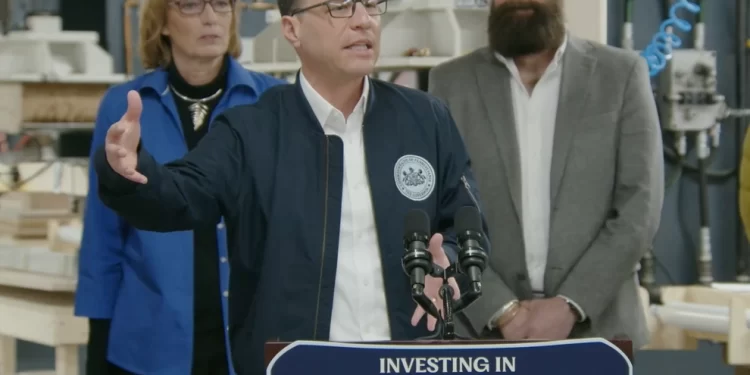By Anthony Hennen | The Center Square
(The Center Square) — The Office of Outdoor Recreation pitched lawmakers on Tuesday for more financial support amid the Shapiro administration’s weeklong tourism campaign.
The industry, according to Director Nathan Reigner, contributed $17 billion to Pennsylvania’s GDP in 2022 and “is a driver of our economy and economic competitiveness strategy.”
He told two House committees during a joint hearing that the office’s mission was to unite, grow, and strengthen the commonwealth’s outdoor economy with a “whole-of-government” effort.
This, on day two of Gov. Josh Shapiro’s week-long RV tour of the state.
Housed within the Department of Conservation and Natural Resources, Reigner positioned the office as a “phone book” organization and not a “wallet” organization. It works across government agencies as a “hub and convener,” he said, “an entity to tie together parts of the state government involved in outdoor-based economic development.”
The outdoor economy, he noted, is 2% of Pennsylvania’s GDP according to the U.S. Bureau of Economic Analysis. Retail, manufacturing, and arts and entertainment comprise almost 56% of that industry.
To grow its outdoor economy, rural Pennsylvania looks toward state and federal grants, but it also needs better connections to state agencies and among rural communities and entrepreneurs. As Reigner sees it, outdoor rec can serve to strengthen communities in less-tangible ways as well.
“The neighborly love that comes along with participating in outdoor recreation and being in these places together, I think that’s a real and rare benefit outdoor rec can offer,” he said.
Getting to that point of growth and connection, however, gets tricky. Many rural areas don’t have the staffing necessary to do so or the people to grow — and the government mechanisms at work don’t move in their favor, either.
“We in Pennsylvania have no shortage of energy, of inspiration, of committed comm members,” Reigner said. “What we do have a shortage of is grant writers and project managers, particularly in some of our smaller communities.”
Much of the funding available for rural development comes in the form of competitive grants, but many rural municipalities and non-profits don’t have the staff necessary to run the gauntlet of grant requirements.
When the Pennsylvania Wilds submitted a plan to the U.S. Economic Development Administration’s $1 billion Build Back Better grant challenge, it failed in part because the Wilds’ plan didn’t create enough jobs. The problem facing that part of rural Pennsylvania, however, is not a lack of jobs — but a lack of people to fill those jobs.
“The way policy and funding is being formulated in DC around outdoor economic development, it keeps score for a game that’s different than the one we need to play in Pennsylvania,” Reigner said.
He argued for getting more capacity into municipal, county, and regional economic development groups to exploit existing opportunities.
“We’ve gotta join this party and get our outdoor industry organized,” Reigner said.




